Hello everyone,
I’m trying to get a Victron engineer or someone familiar with their Charge controller design (and also lithium batteries) to tell us under what circumstances could any of their BlueSolar / SmartSolar controllers “reverse charge” a Lithium Battery.
Background on the question:
A couple months ago I ditched FLA and switched to a pair of Model S Lithium batteries in series for 48 Volts.
I also put in a new charge controller 150/60 and BMV-712 as I thought the Victrons had the best product line for managing and protecting a Lithium installation.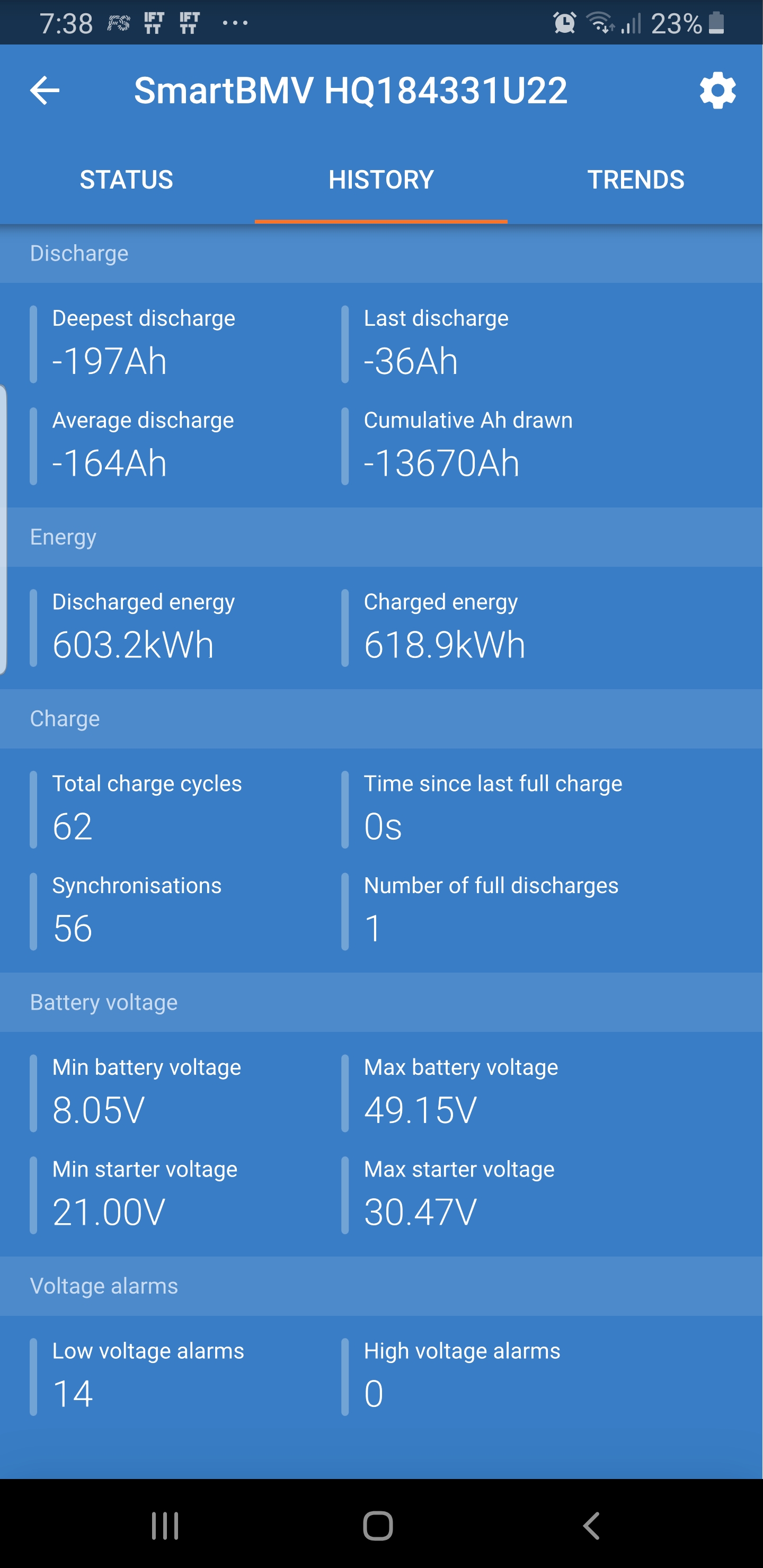

As can be seen from the two charts above, this has been working flawlessly for over 60 days.
I have been noticing that prior to sunrise, my Tesla modules may get down to 20% SOC or about 39 Volts because I have the Victron stuff setup like so.

Wanting to prolong the lifespan of these two Tesla modules (by not cycling them so deeply every day), I thought I would add another pair in parallel and double storage capacity in one go.
So, I bought another pair of 5.3KWh modules (with warranty), but thought it would be a good idea to run this new pair by itself for a few days before I put them in parallel with the already working set.
Modules arrived pretty well balanced at ~20 Volts each, and within 0.2Volts of each other. So, so far so good.
I used two of the M8 terminal bolts from my existing two modules (because one of the modules arrived without terminal bolts) and also used the existing 1/0 cable from the working modules to connect the (+) and (–) terminals together in series for 48V,
and swapped in the new modules in the place of the old modules.
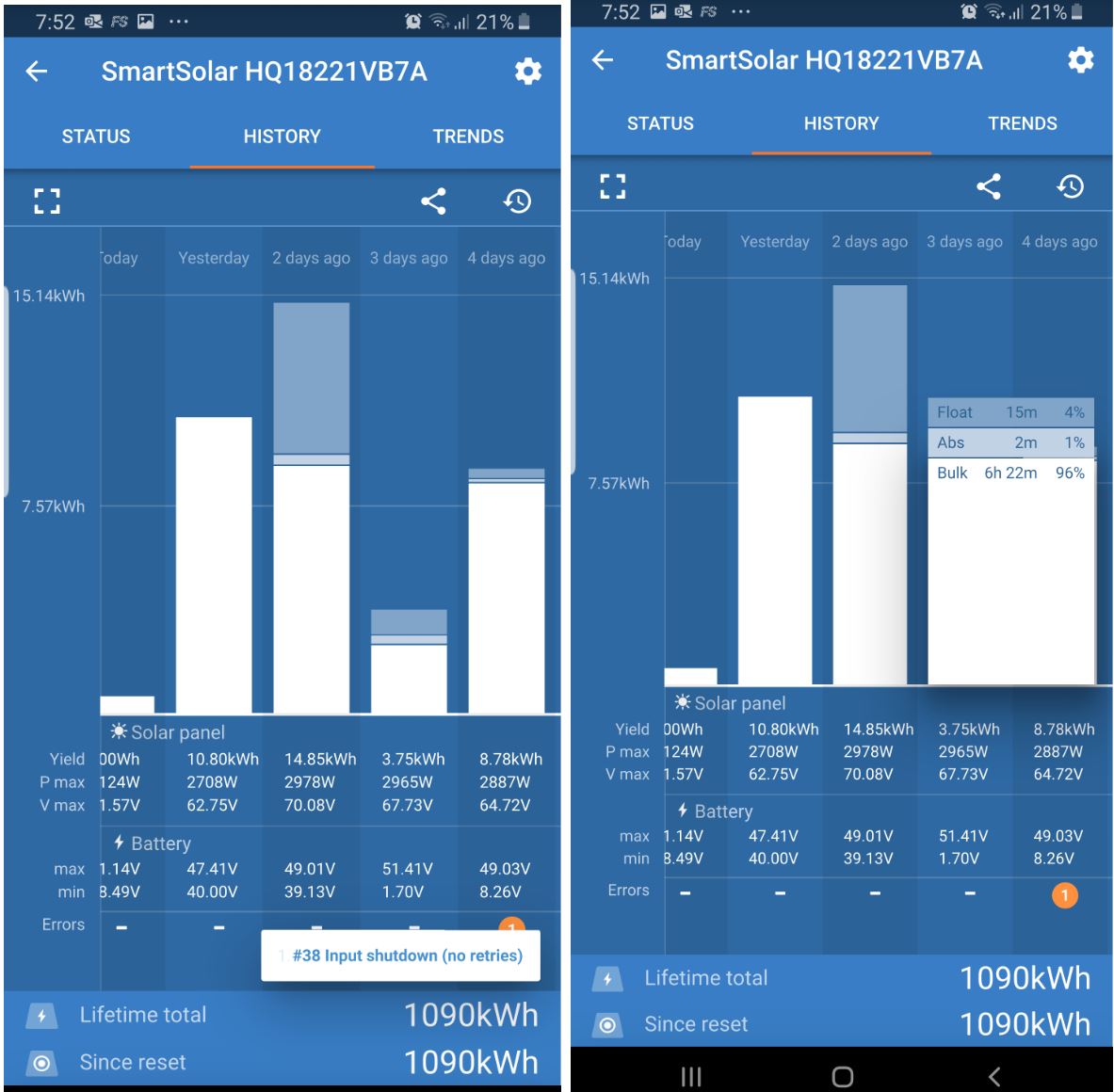
As can be seen from Bar Chart above, (under the 4 days ago column), the battery conked out after 15 minutes in float. With Error #38.
After disconnecting the modules and looking into this further, I realized that one of the Tesla Modules was at 19+ Volts, while the other was at 25+ volts.
Upon contacting the battery vendor telling him that one of the modules is DOA, he said “when
you charge them and are charging 2 together in line at the same time, the
first battery charges first then the second one starts to charge. Thats
how they work. If you swap the order of the batteries you will see other
battery charges first then second” - over a decade experience working on High Voltage and commercial UPS installations and I must admit I have never heard any such thing before.
Anyway, vendor suggested that I do load tests to see which battery depletes faster.
With one DC water heating element and within 30 seconds I identified that the module that came without the bolts would voltage sag while the other module did so negligibly.
Battery vendor then says that these test result are irrelevant so I suggested we check the individual voltages that make up the 6S.
This is what I found.

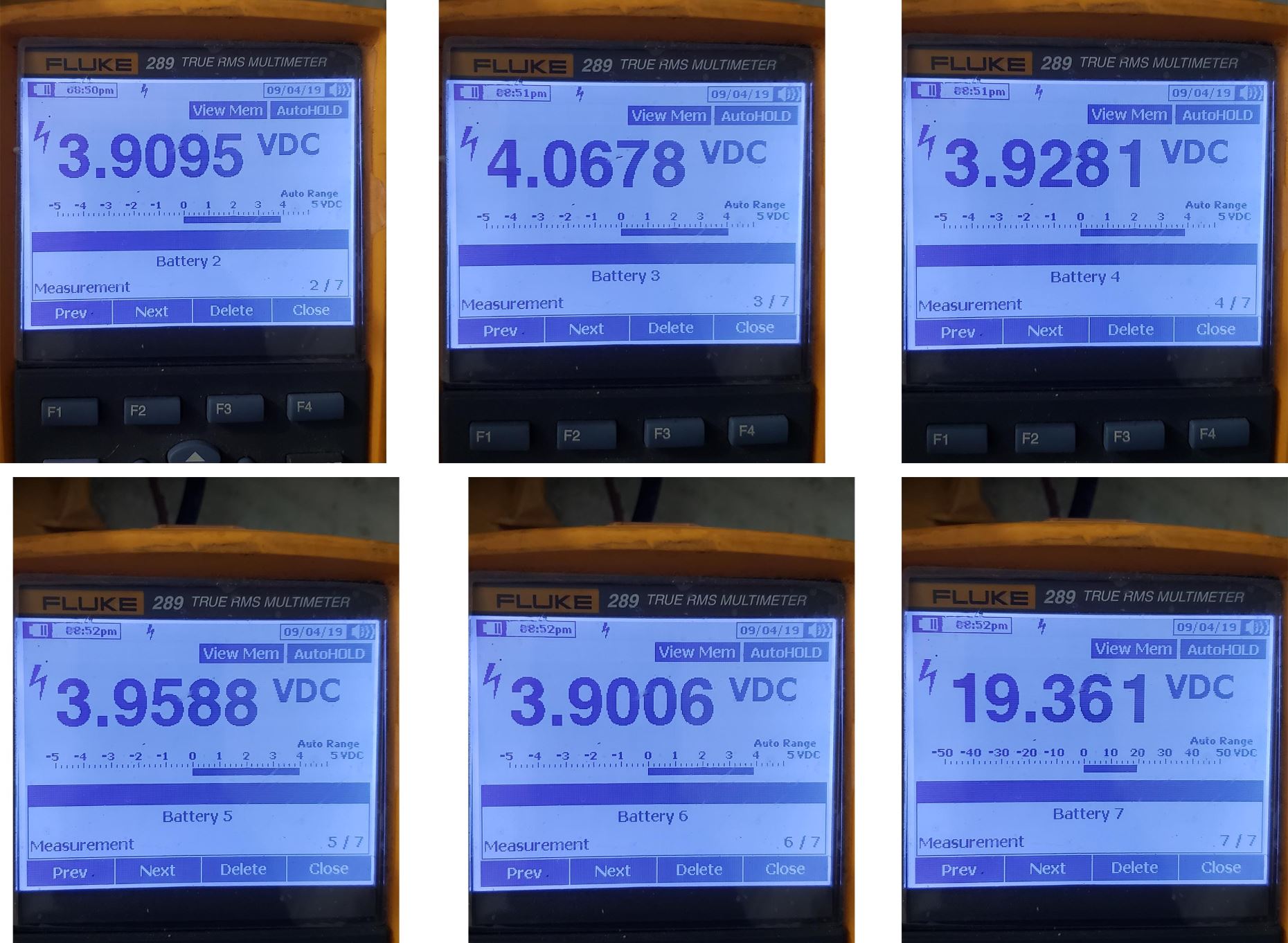
Cell bank #1: test Pins 0 and 1: *Battery 1 on DMM screen*: -0.4058V
Cell bank #2: test Pins 1 and 2: *Battery 2 on DMM screen*: 3.9095V
Cell bank #3: test Pins 2 and 3: *Battery 3 on DMM screen*: 4.0678V
Cell bank #4: test Pins 3 and 4: *Battery 4 on DMM screen*: 3.9281V
Cell bank #5: test Pins 4 and 5: *Battery 5 on DMM screen*: 3.9588V
Cell bank #6: test Pins 5 and 6: *Battery 6 on DMM screen*: 3.9006V
__________________________________
Module Total: *Battery 7 on DMM screen*: 19.361V (tested at main M8 terminals)
Sent these results over to the vendor, and he is now saying that the battery was “negative charged.”
I responding by telling him that the Victron MPPT is a computerized charger and cannot “negative charge” a battery – also noting that 5 out of the 6 individual cell sections are almost at 100% SOC.
Battery vendor now saying that “at some point you hooked it up backwards” – AFAIK, hooking up a battery to the Victron backwards would kill the Victron MPPT, not the Battery.
Furthermore, there’s no chance to connect anything backwards, since all connections are preexisting.
Original 2 Tesla modules I had were swapped back in 6:20pm (September 2) and from the same screenshots above we can see (3 days ago column, 2 days ago column, yesterday column and today column), the Victron MPPT charge controller continues to work flawlessly. (1.70V for V-min apparently shows that I changed the battery that morning. 8.26V for V-min apparently shows that I swapped the battery again but it recorded that swap on the morning of the first sunrise it saw on September 3, since it would have lost power.)
Received notification when charger switched to float mode,
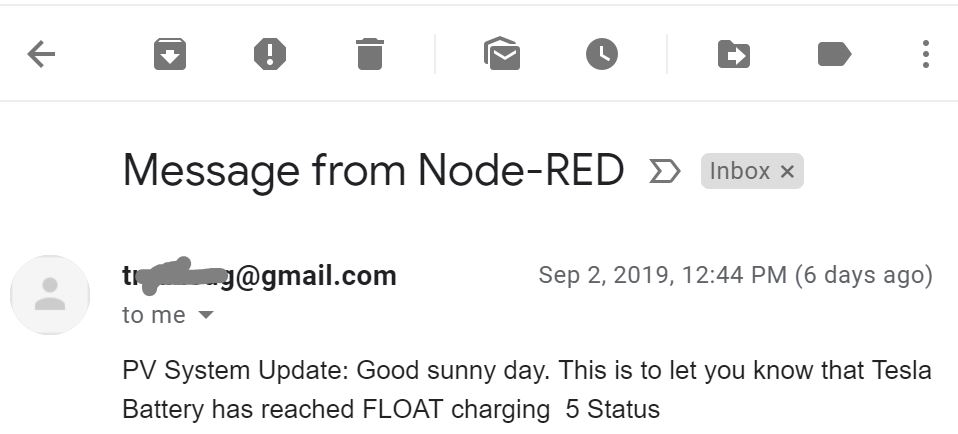
System errored out 15 minutes after that.
I also looked over the logs for charger status (3=bulk, 4=absorb, 5=float), voltages and temperatures on 3rd party monitoring also says the Victron MPPT works as it’s supposed to up until the time cell bank #1 of the Tesla Module seem to have died.
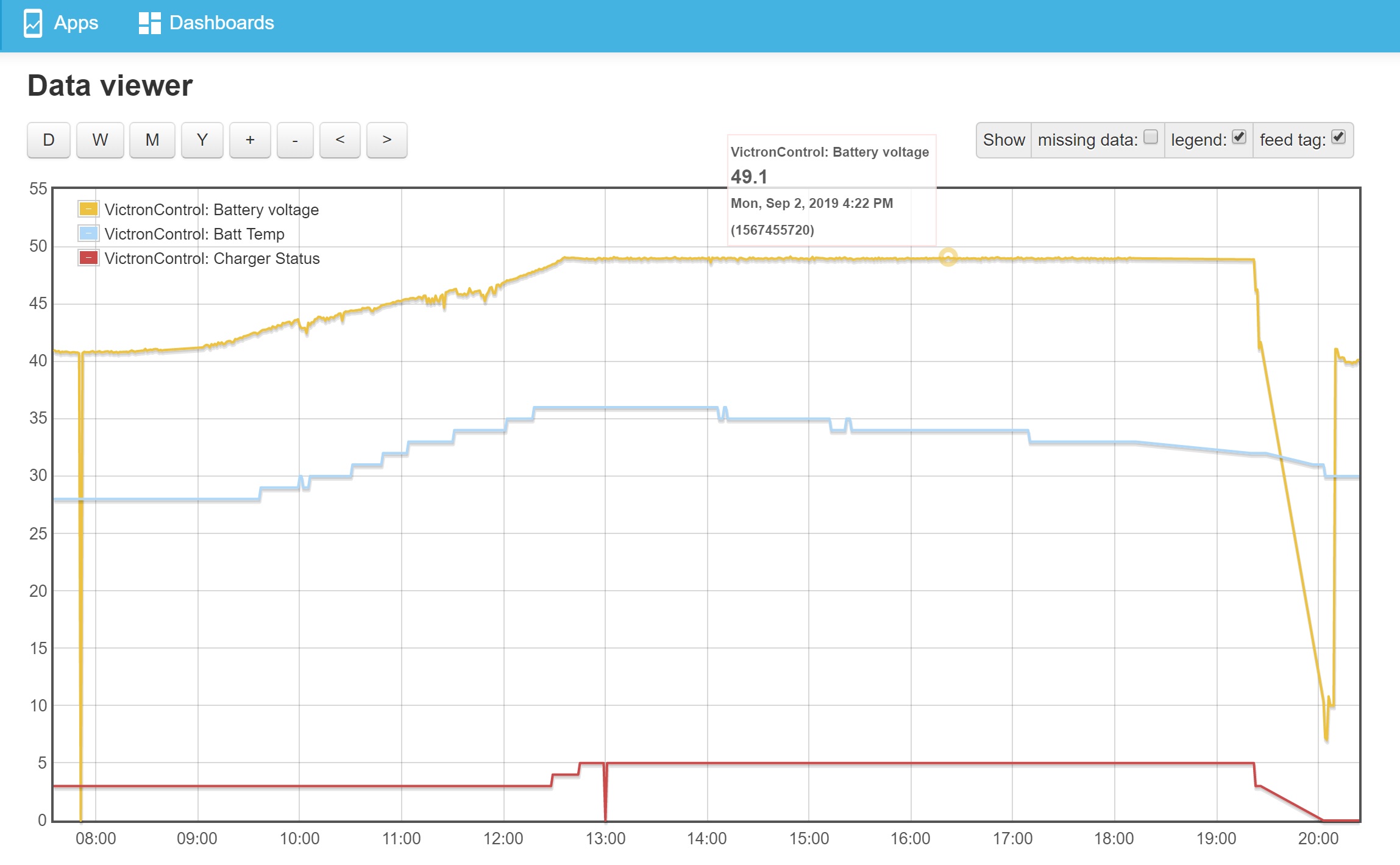
Charger status 5 after the error #38 spike and up to the time of disconnection seems like garbage data to me as you can see the temperature readings from the BMV showing a decrease meaning that both loads and charging were disconnected (switched back to Grid). (Times on graph above are 1 hour ahead.) Nothing else unusual was detected with the battery voltage on the monitoring until the Tesla modules were disconnected and tested separately with the Multimeter.

30 day history also shows this is the first time the Victron has ever posted an error. Row 6 is the day in question.
I would like to get the bad module I received replaced under warranty.
If it is that this data does not indicate that the module was delivered to me with a weak cell bank #1,
I’d like to know under what circumstances can a Victron Charge controller “negative charge” 1 cell block out of a 12S battery setup, while charging the other 11 seemingly okay.
I look forward to your responses.
Thanks.
